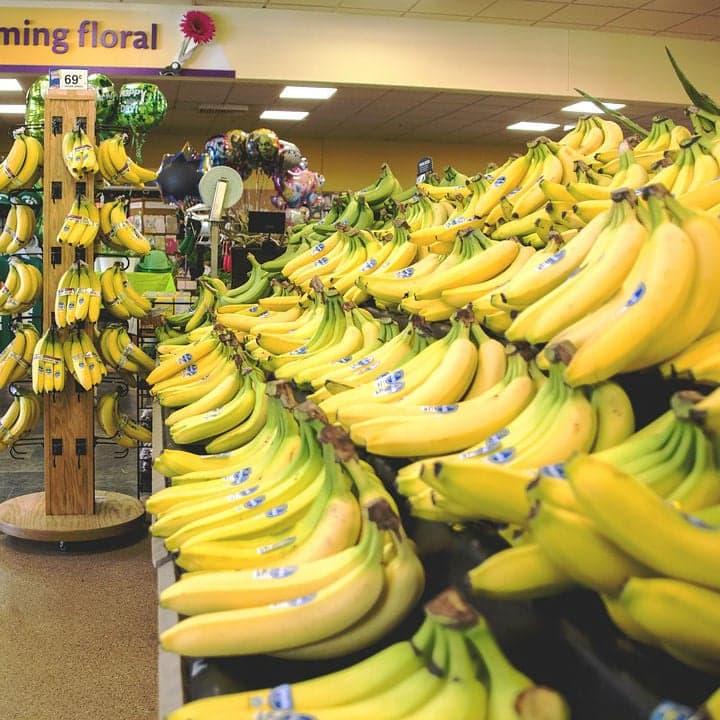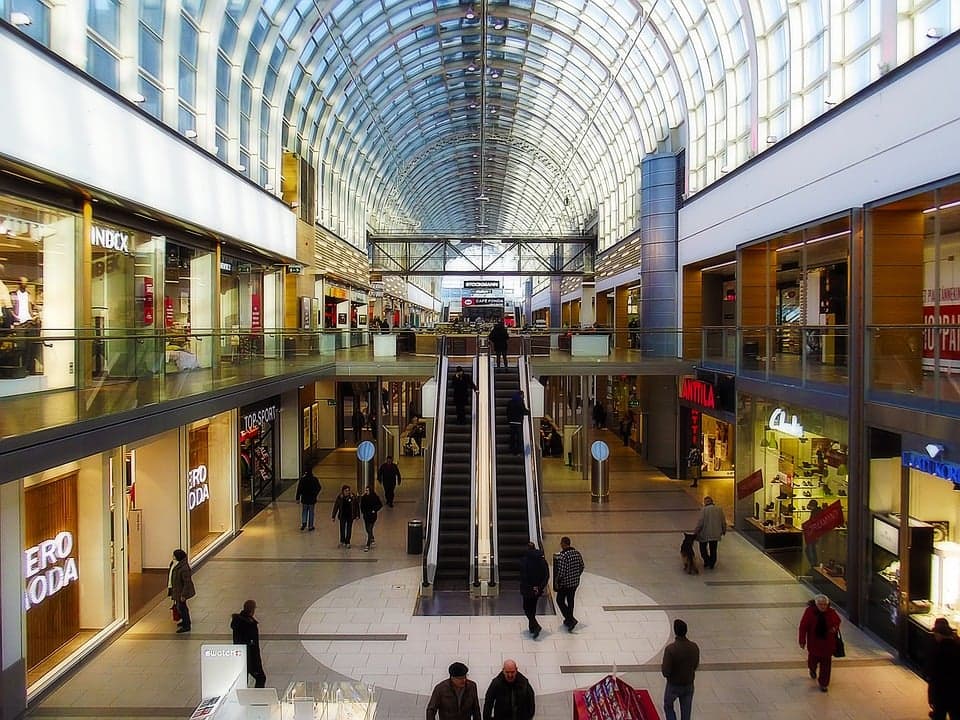This month marks the 10-year anniversary of the ‘Great Recession.’ The subprime mortgage crisis ignited the 2008-09 financial crisis in the US, which rippled through almost every market in the world causing a global meltdown. America itself is estimated to have lost about $4 trillion from the financial crisis and its labor market has not yet recovered ever since. So, what should we expect this upcoming year?
globalEDGE Blog Archive December 2017
Publish Date:
Although overall retail spending has continued to grow, factors such as e-commerce and an abundance of shopping malls are changing the way people shop. Today, e-commerce sales are steadily increasing, with Amazon sales rising from $16 billion to $80 billion between 2010 and 2016, and nearly half of all United States households are now Amazon Prime subscribers. Also, according to Cowen and Company’s research analysts, between 1970 and 2015 the number of shopping malls in the United States grew more than twice as fast as the population.
Publish Date:
Flipping on the television, powering up a gaming device, and relaxing on the couch has become a routine for millions of people around the globe—in fact, it’s estimated that more than 1.8 billion people are playing video games worldwide on a range of devices from smartphones, to game consoles and computers. In the US alone, there are 2,858 video game companies and 65,678 workers within those companies based on Forbes estimates. According to Newzoo, these people along with the billions of players will help the market value grow 7.8 percent to $108.9 billion in 2017. The major leader in the market is the mobile games sector, which accounts for 42 percent of revenue—$46.1 billion—and the profound interest from the Asia-Pacific market. With the current growth expected to continue, the video game market is expected to reach $128.5 billion by the year 2020.
Publish Date:
With over $25 billion in global sales, the banana is the world’s most popular fruit. However, the spread of a fungal disease, commonly known as Panama Disease, is threatening the existence of the banana as we know it. The soil-borne fungus has already damaged approximately one-third of Asia and Australia’s banana plantations and has spread west to the Middle East and Africa. If the disease makes its way to Latin America and the Caribbean, which account for 85% of world banana exports, it could be game over for the banana as we know it.
Publish Date:
There is no doubt that studying abroad has become one of the most established business sectors in international education. The number of students studying abroad is increasing every year and this is encouraging institutions and governments to tap into the market. Becoming a part of this growing industry has a great business impact on educational institutions, organizations, and faculties.
Publish Date:
Created in 1960 via the union of newly independent British and Italian Somaliland, the coastal country in the Horn of Africa has a long history of instability, insurgency, and anarchy. Less than a decade after its creation, the elected government of Somalia was overthrown in a coup that ushered in an authoritarian socialist rule that saw the nationalization of the economy of persecution of political dissidents. The authoritarian government collapsed in 1991, after more than 30 years in power, creating a power vacuum that led to decades of civil strife and anarchy with a lack of central government.
Publish Date:
As the 2018 Winter Olympic Games transcends upon us, it is an interesting time to research the Olympics business model and gain an understanding of their past successes and cloudy future
When Budapest, a frontrunner to host the 2024 Summer Olympic Games dropped out of the running, an unofficial signal was shown to the Olympic Committee that changes need to be made for the current Olympics business model. The reason being, “to avoid a loss of international prestige” as said by parliament leader, Lajos Kosa. On top of this, the 2022 Olympic Winter Games bids came down to two prospective bidders. Almaty, Kazakhstan and Beijing, China. This was due to a fair amount of potential cities failing to compete for an Olympic bid. Events like this make the rest of the world wonder, what is happening to the prestige of the Olympics?
Doug Barry, Conover + Gould Strategy Group
Publish Date:
Last fall, college students participated in the annual ritual of moving into campus housing. It’s different now than it was in the 1970's and 80's when some of you readers were heading off to college.
One big difference is the number of students going abroad for at least a year of their university education. Yes, there were such students back in the day, but their numbers paled compared to the traffic generated across the oceans this month. Passing through Boston’s Logan airport on a busy moving-in weekend provided visual confirmation of this phenomena. Young people from everywhere were disembarking flights, wearing their college sweatshirts: Boston University, MIT, Harvard and many others were represented. Some of the kids carried their teddy bears.
Publish Date:
With a population just over half a million and total land area of 1,000 square miles, Luxembourg is one of the smallest countries in the world. Despite their size, Luxembourg is a major player in the global financial industry. With $4 trillion in assets in custody of financial institutions, the landlocked Central European Grand Duchy is the second largest investment fund domicile in the world, behind only the United States. The financial industry in Luxembourg is responsible for over 35% of the Grand Duchy’s $62 billion GDP (PPP).
Publish Date:
Trading between cryptocurrencies, also known as virtual currencies, continues to grow as government legalization paves the way for international investment. Japan and South Korea, in particular, have seen significant increases in trading activity and continue to set records for the market.
Publish Date:
Every year, millions of people go shopping the weekend after Thanksgiving. However, people are choosing to shop online on Cyber Monday rather than visit retail stores on Black Friday. Cyber Monday was one of the biggest shopping days in the United States. This year, Americans spent $6.59 billion on Cyber Monday alone, according to data from Adobe Analytics. This large amount of online orders so close to Christmas puts extra stress on retailers trying to avoid late deliveries and unfilled orders. Normally during the holiday season, the number of late deliveries to households doubles, but this year, companies are having a particularly hard time delivering all of their orders on time.
Publish Date:
Located off the South Eastern coast of Africa in the Indian Ocean, Madagascar is the world’s fifth biggest island. Historically, the island played a key role for international traders dating back to Asian and Persian traders in the 7th century. Madagascar subsequently served as a pirate stronghold in the 17th century and a major slave trading center into the 18th century. Madagascar was conquered and colonized by the French colonial empire in the 16th century but regained independence in 1960.
Publish Date:
A collaboration between Supreme, a top-tier streetwear brand, and Louis Vuitton, a high-end fashion company, has produced a hoodie that costs upwards of $7 thousand. Another collaboration between Supreme and The North Face, a winter outerwear company, gave way to a $600 backpack. So what’s causing this uptick in prices for everyday items? Streetwear—the casual clothing of a style worn especially by members of various urban youth subcultures—is one of the world’s fastest growing industries, with an estimated value of $309 billion.
Publish Date:
2018 might be the year that you see an increase in the price of your favorite bottle of wine. In late October, the International Organization of Vine and Wine (OIV) released its annual report of 2017 wine production levels around the world, and the results exposed several indications for concern about the performance of the global wine industry. The OIV estimated a fall of 8.2 percent in global production to the lowest level the industry has experienced in 50 years. This decrease is equivalent to around 2.9 billion bottles of wine.
Publish Date:
The economy of Renaissance Italy is incredibly interesting. During the Italian Renaissance, there were few nations or states that could come close the advanced level of commerce the Italian city-states achieved.
Publish Date:
It is very likely that you will soon witness a self-driving truck next to you on the highway. The world keeps taking a step further into the tech field, sparking innovative solutions for automotive companies. The automotive industry is highly competitive and many automotive companies are working very hard to stay ahead and take part in one of the greatest advancements in trucks.
Publish Date:
International trends regarding Foreign Direct Investment (FDI) include optimism for large developed markets, a 2016 decline in global FDI, and North America, Asia, and Europe as top FDI destinations. Due to the recent global economic growth, many developed and emerging markets have seen FDI inflows in recent years.
Publish Date:
Each day, millions of people fill up reusable water bottles during school, sports, and work, continuing to grow the trend of ditching clear plastic bottles for their refillable—and more environment-friendly—counterparts. Fueled by an increase in online shopping, reduction in overall price, and easy accessibility, the consumption of reusable water bottles across the globe is estimated to reach 3,902,642 thousand units in 2017 alone. The implementation of these types of bottles into sports and travel shows the most opportunity for the market to grow, finding more efficient and practical ways for users to store and drink water without negative health and environmental impacts.
Publish Date:
Days are growing shorter, the temperature is dropping and families are beginning to dig their snow boots out of storage. Winter is fast approaching which means the lucrative ski market will begin to rise again worldwide. In America alone, the winter sports industry is valued at approximately 12 billion dollars and is expected to grow in the upcoming decades. However, many people are beginning to grow weary of the industry due to the looming idea of climate change.
Publish Date:
According to The Conference Board’s Consumer Confidence Index, consumer confidence in the United States has increased three points, rising to 129.5 from 126.2 in October. Consumer confidence has been steadily increasing over the past five months, and is now the highest American consumer confidence rate posted in the past 17 years. Americans are becoming increasingly confident in their finances, and spending even more as we come into this year’s holiday season. During the second quarter of 2017, consumer spending in the United States has increased by 3.3% to $11.8 trillion. This rise in consumer spending is noteworthy, considering consumer spending makes up almost 70% of GDP. Two-thirds of this spending is on services, almost one-fourth is on nondurable goods, while the rest is spent on durable goods.






















